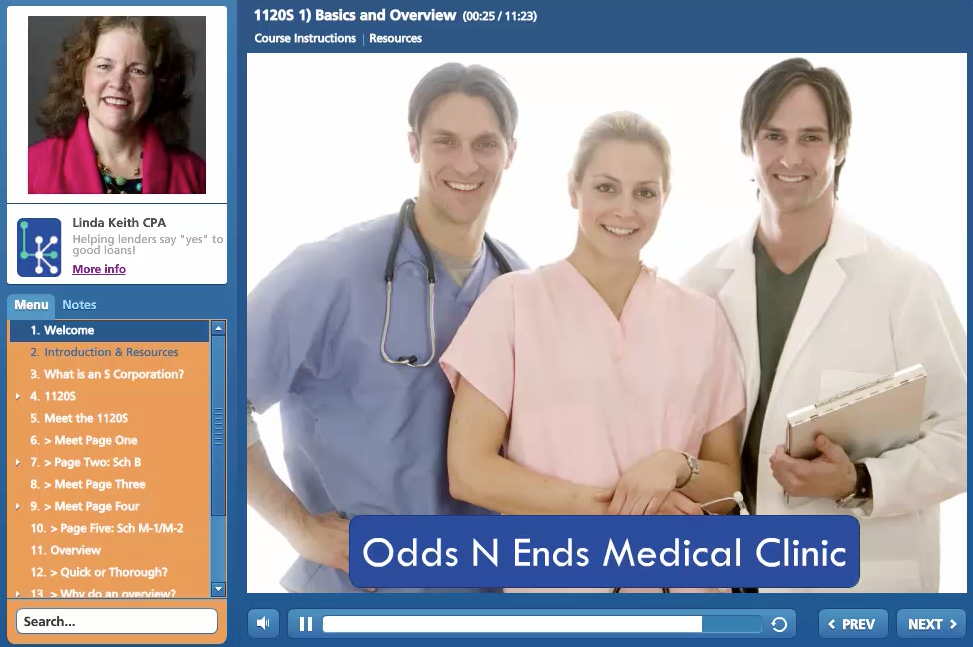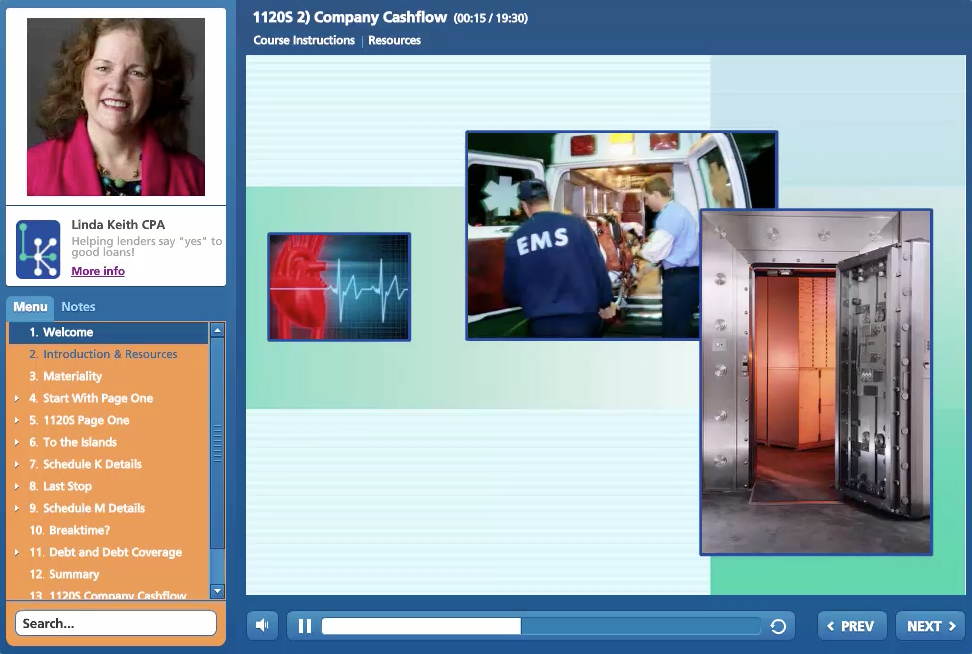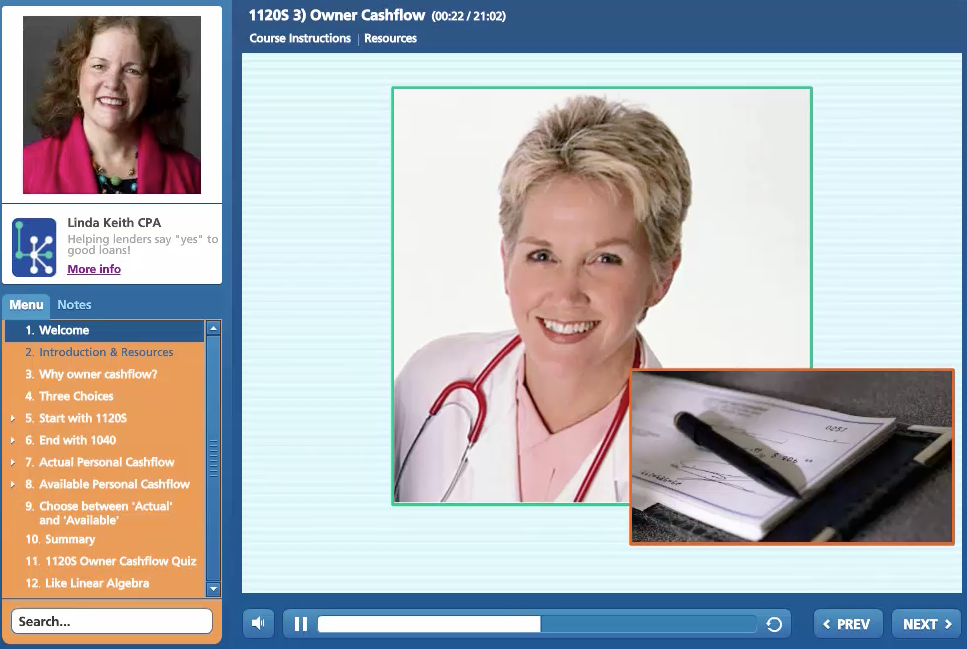Amanda asks:
What are your thoughts about an S-Corporation and/or its owners if you see 50/50 owners who both have significant negative ordinary business income (Line 1) on their K-1 ($20K-$40K), but significant W2 income ($125K-$160K) in their 1040?
Linda says:
The amount of ordinary income/loss does not give you a hint as to whether the company can afford the wages paid.
Imagine, for example, that the ordinary loss could be completely due to the tax deduction at the company level for depreciation, which as you know is noncash and would not reduce the company’s ability to pay wages.
On the other hand, the entity may have significant debt and the situation may be much worse than the ordinary loss implies. Ordinary income/loss is never cashflow.
Is this a personal loan to the owners or a business loan?
For a personal loan to the owners, you need to either follow your own Financial Institution (FI) guidelines or, if selling to a secondary market lender like Fannie Mae, you need to follow their guidelines.
For a business loan for which you are doing global analysis, you need to follow your guidelines. See more guidance below.
Is this a personal mortgage loan?
You may have to count the ordinary loss against them if:
- this is a mortgage loan
- you are selling to Fannie Mae or another secondary market mortgage lender
- they are less than a 25% owner
Check the guidelines of the secondary market lender. BTW, I disagree with this approach since the taxpayer’s share of ordinary income or loss is never cashflow. But it is a simplifying approach some secondary market lenders take.
In your example, though, you indicated a 50% owner. When the owner is 25% or more, you will likely be getting the full entity return and finding the adjustments to get them from their share of ordinary income/(loss) to recurring cash flow available to them from the company. This is likely the guidelines for any mortgage loan, whether portfolio or secondary market. If a portfolio loan, though, I have seen the cut-off be something other than 25%. Check your guidelines.
Is this a personal loan other than mortgage?
A common guideline for personal cashflow of a business owner/guarantor with <25% ownership is to use distributions (plus guaranteed payments if a 1065-filing entity) less capital contributions. LLCs may, and partnerships do, file a 1065.
With 25% or more ownership, many FIs require the full entity return and include the owner’s share of cashflow available from that company. Some allow you to use your judgment between actual cashflow (from the k-1) or share of cashflow available (calculated from the full return).
Guidelines are critical though so be sure you are clear on yours.
Is this a business loan?
When using tax return analysis to lend to a business, many analysts work up a global cashflow. This includes the net cashflow of the business and any guarantors in one analysis. Since owners can put money in or take it out at will, this gives a more accurate picture.
Once again, your FIs internal guidelines rule the day. You likely will do a full analysis of the entity and determine its cashflow available to pay debt. Ditto for the owner. Then put the combined debt on a debt list to calculate Debt Coverage Ratio (DCR, also called Debt Service Ratio).
Consider including in the owner’s personal cashflow the actual cashflow from the entity (distributions, guaranteed payments if 1065, less capital contributions). Then deduct from the entity cashflow distributions made to all owners. If 100% of the owners are also guarantors, this will wash (‘income’ in the personal analysis offset by ‘expense’ in the entity analysis.).
The reason I like this approach is that it will capture the distributions made out to non-guarantor owners if you do not require everyone to guarantee. It also captures the distributions to the owner for when you make a different loan either to them or to another entity they have an interest in.
The importance of knowing your guidelines
Guidelines are critical and vary from FI to FI, and from one type of loan to another. Now that you have an explanation of what the common guidelines are, find out which one applies to you.
Need more of a foundation?
I believe that confusion about k-1s and global cashflow are a prime reason that even more experienced lenders and analysts take our training at Lenders Online Training. We need to avoid double-counting the cashflow from a pass-through entity such as a partnership, LLC or an S Corporation.
Option 1: Let’s talk.
If you are considering training for yourself, your team, or your entire credit department? Schedule a time to talk now. One of our senior trainers will help you decide what will work best for you.
Option 2: Explore the opportunities
Discover flexible, practical and immediately useful self-study and virtual class online training on Tax Return Analysis and Financial Statement Analysis. At Lenders Online Training we focus on lending to businesses, complex individual borrowers and farms.
These 3 modules cover S Corporations. We have 30+ modules on tax return analysis and financial statement analysis.



With our training, you will analyze tax returns and financial statements faster, easier and with more confidence. Check it out here.
